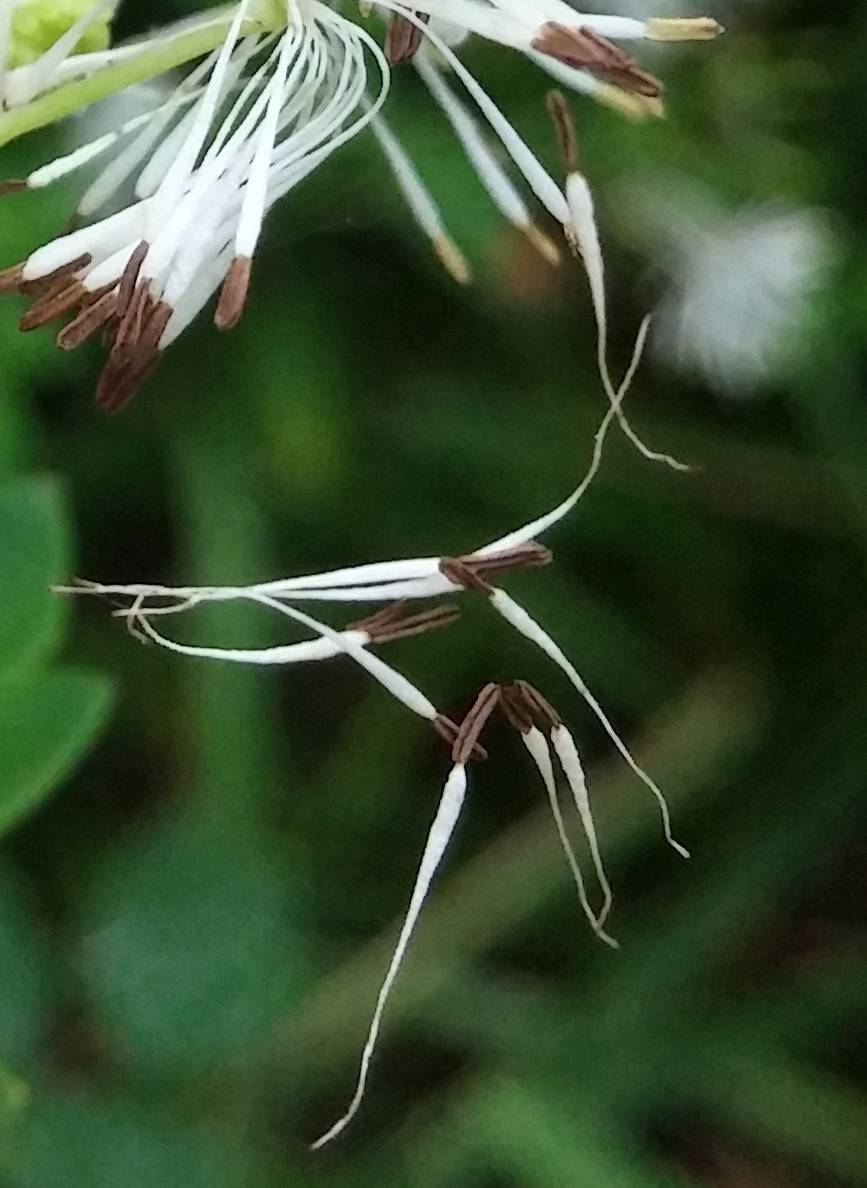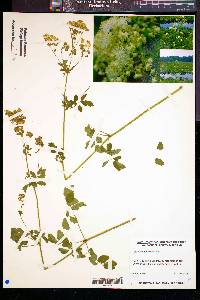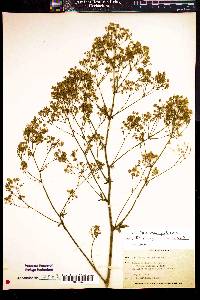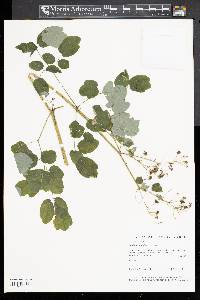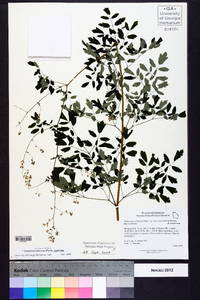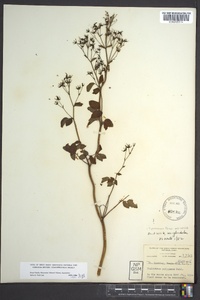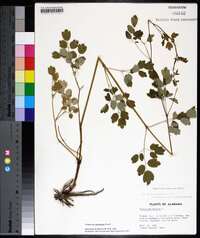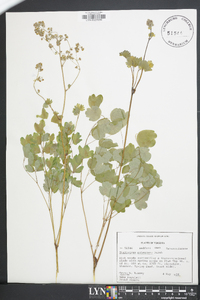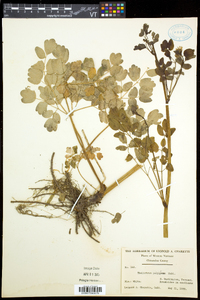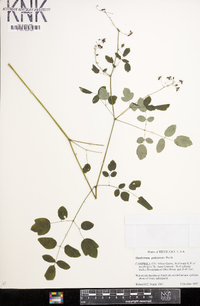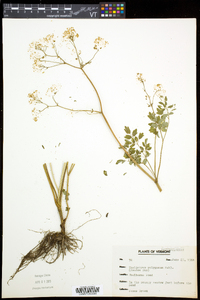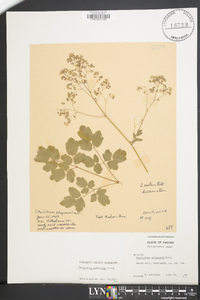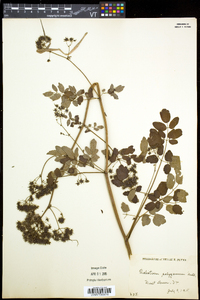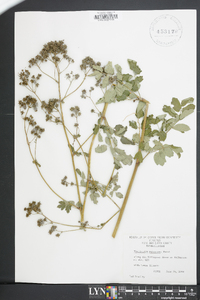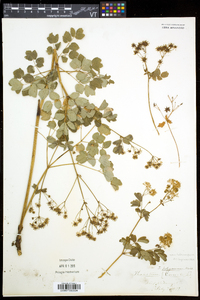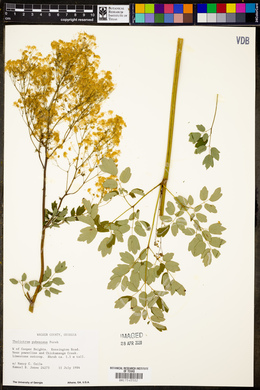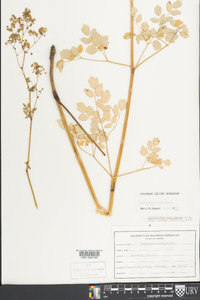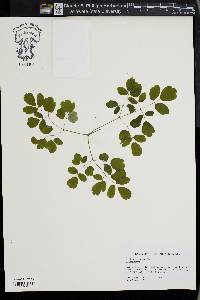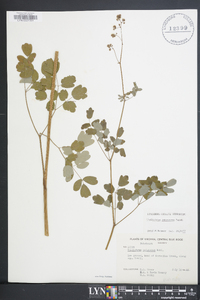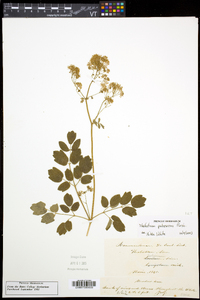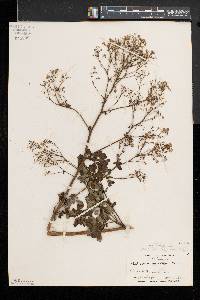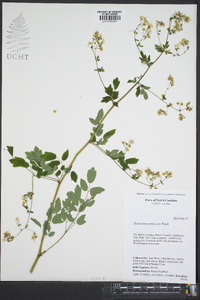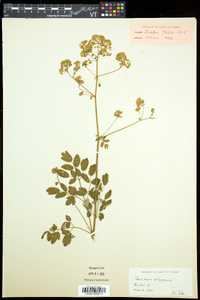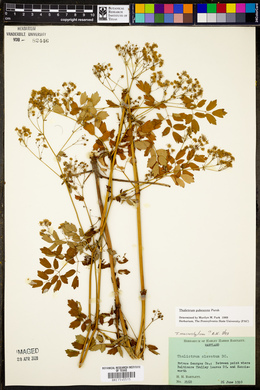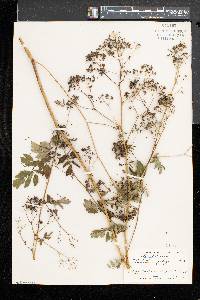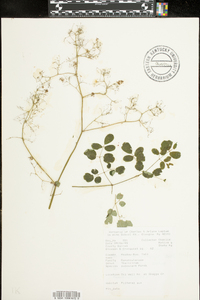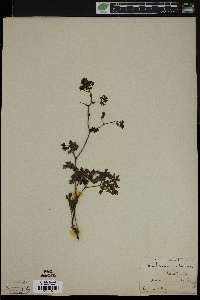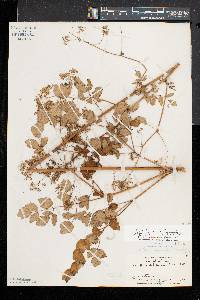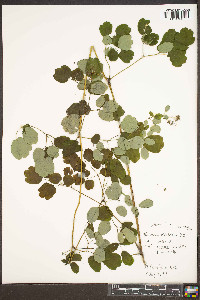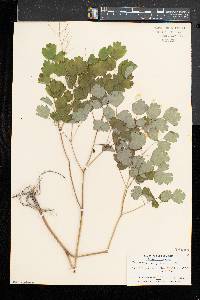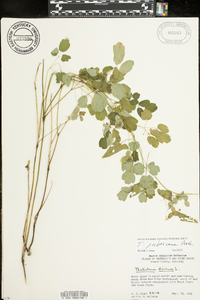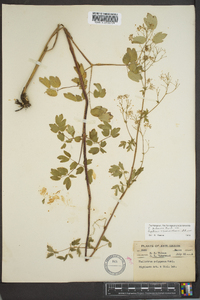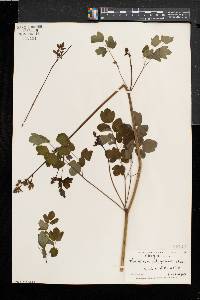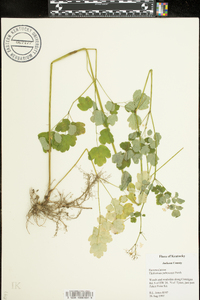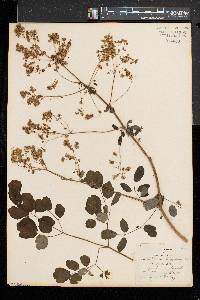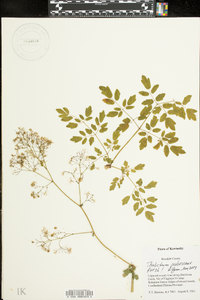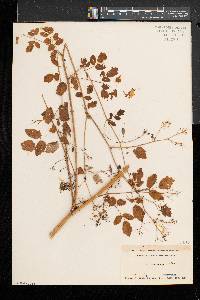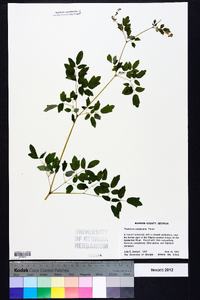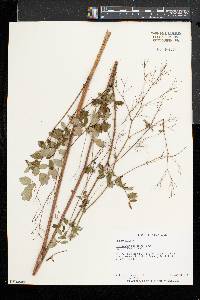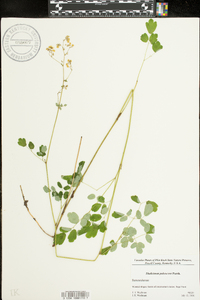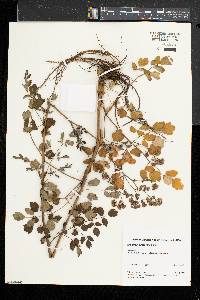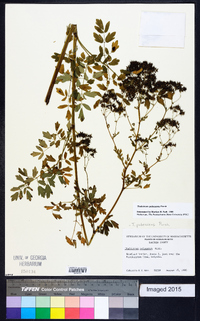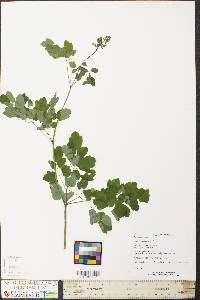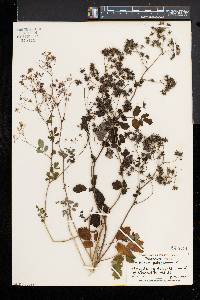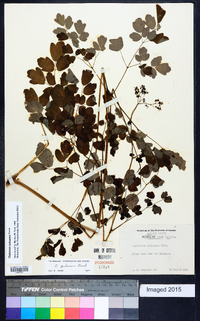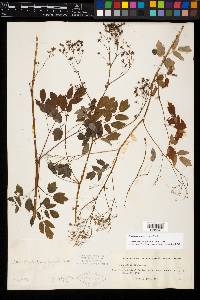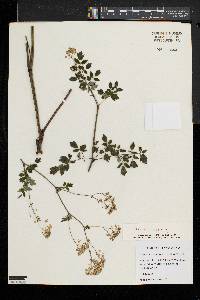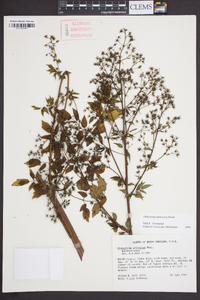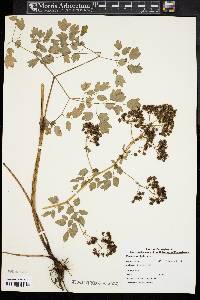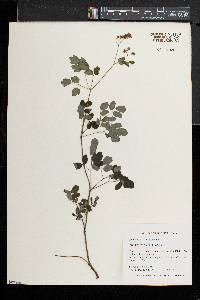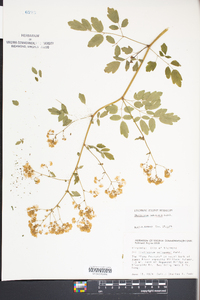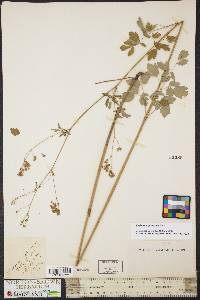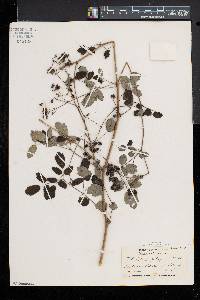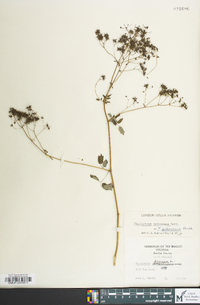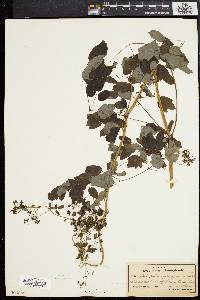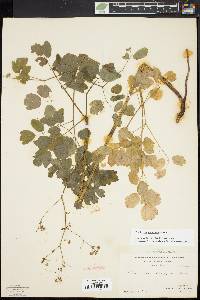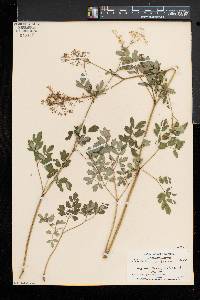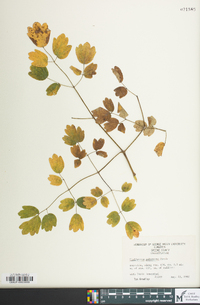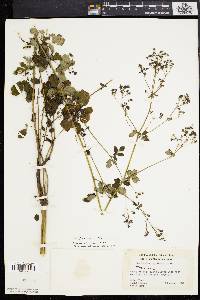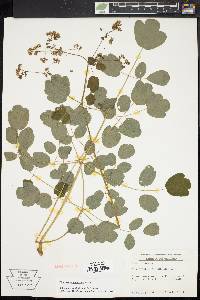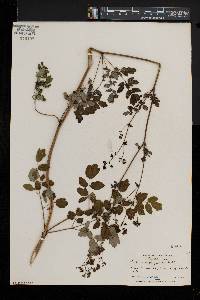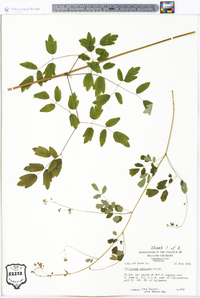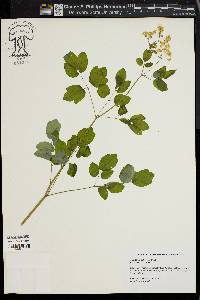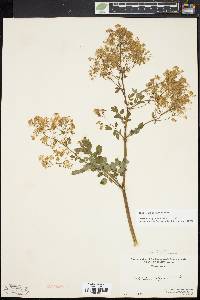
|
|
|
|
Family: Ranunculaceae
King-of-the-Meadow
[Thalictrum carolinianum Walter] |
Stems erect, coarse, 50-300 cm. Leaves basal and cauline; basal and proximal cauline leaves petiolate, distal cauline sessile; petioles and rachises frequently pubescent. Leaf blade ternately and pinnately decompound; leaflets light to dark green, cordate or nearly orbiculate to ovate or obovate, apically undivided to 2-3(-5)-lobed or -toothed, 11-68 × 5-70 mm, length 0.8-2.6 times width, membranous to firm, margins scarcely revolute, lobe margins entire, surfaces abaxially pubescent to glabrous. Inflorescences racemes or panicles to corymbs, apically ± rounded, many flowered; peduncles and pedicels often pubescent. Flowers unisexual or bisexual (sometimes bisexual with very few stamens); sepals 4(-6), white to purplish, elliptic-rounded, 2-3.5 mm; filaments ascending, white to purplish, filiform to distinctly clavate, 1.5-7 mm, usually rigid; anthers 0.5-1.5(-2.1) mm, usually blunt or only slightly apiculate. Achenes numerous, sessile to stipitate; stipe 0.5-1.5(-2.4) mm; body ellipsoid, 3-5 mm, prominently veined, usually pubescent; beak usually persistent, straight or coiled distally, 0.6-2.5 mm, about 1/2 length of achene body. 2 n = 126. Flowering late spring-summer (mid Jun-early Aug). Full sun to deep shade, rich woods, low thickets, swamps, wet meadows, and stream banks; 15-1500 m; St. Pierre and Miquelon; N.B., Nfld., N.S., Ont., P.E.I., Que.; Ala., Ark., Conn., Del., D.C., Ga., Ill., Ind., Ky., Maine, Md., Mass., Mich., Miss., N.H., N.J., N.Y., N.C., Ohio, Pa., R.I., S.C., Tenn., Vt., Va., W.Va. The ovaries change from white to purplish, becoming light green, then darker green, and finally brown as fruits mature. Because of the polymorphic nature of Thalictrum pubescens , a proliferation of names for minor morphologic variants has resulted. Field studies (M. Park 1992) have shown that too much morphologic variation occurs within populations to support the recognition of previously described taxa. Plants in New England and northeastern Canada often have a corymbose inflorescence and longer filaments and achene beaks. This species is often incorrectly treated in floras as T . polygamum Sprengel, an invalid name. The Iroquois used Thalictrum pubescens medicinally a a wash for head and neck, to stop nosebleeds, and to treat gall (D. E. Moerman 1986).
Stems mostly 1-3 m, arising from a short crown; cauline lvs sessile; lfls glabrous to more often minutely puberulent beneath, mostly 3-lobed and more than 15 mm; infl ±rounded above; sep 2-3.5 mm, ±elliptic and rounded; filaments white, dilated distally, often wider than the anther, constricted at the tip; anthers usually narrowly obovoid, blunt, 0.8-1.5 mm; stigmas 0.5-2 mm, fiddlehead-curved; achenes somewhat glandular, drying dark, 3-5 mm, a third to half as wide, narrowed below to a short stipe 0.3-0.5 mm; lowest achenes much reflexed, the head of achenes therefore subglobose; 2n=84, 154. Rich woods, wet meadows, and streambanks; Lab. and Que. to Ont.,
s. to s. N.C., Tenn., and Ind. June-Aug., often later than other spp. (T. polygamum) Gleason, Henry A. & Cronquist, Arthur J. 1991. Manual of vascular plants of northeastern United States and adjacent Canada. lxxv + 910 pp. ©The New York Botanical Garden. All rights reserved. Used by permission. From Flora of Indiana (1940) by Charles C. Deam I have seven specimens of this species and there are two from Jefferson County in the herbaria of Wabash College and Indiana University. The specimens are all from low ground in woods in the counties bordering the Ohio River. The type specimens were collected at Lemon's Gap, North Carolina, which is located at an elevation of about 3,500 feet about 131 miles west of Hot Springs, North Carolina. The leaflets of all of my specimens are very thin, not revolute, and more or less pubescent beneath. The short and blunt anthers on very broad filaments are very distinctive. Broad filaments alone, however, can not be used to differentiate this species because other species also have wide filaments. The achenes are usually few, mostly stipitate, and reflexed when mature. This is a tall plant of wet woods. …… Indiana Coefficient of Conservatism: C = 6 Wetland Indicator Status: FAC |
This project was made possible in part by the Institute of Museum and Library Services [MG-70-19-0057-19].
Powered by Symbiota

